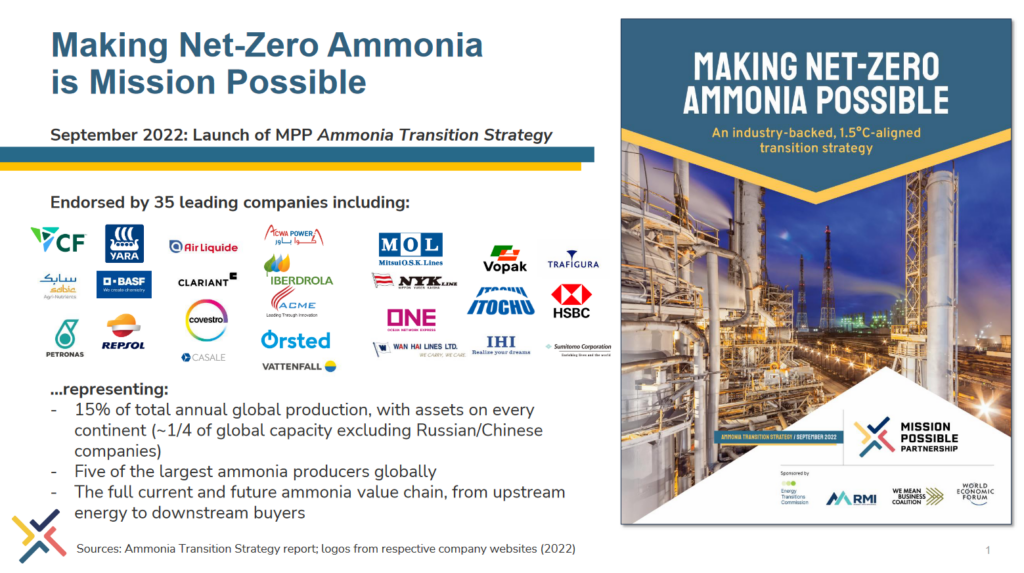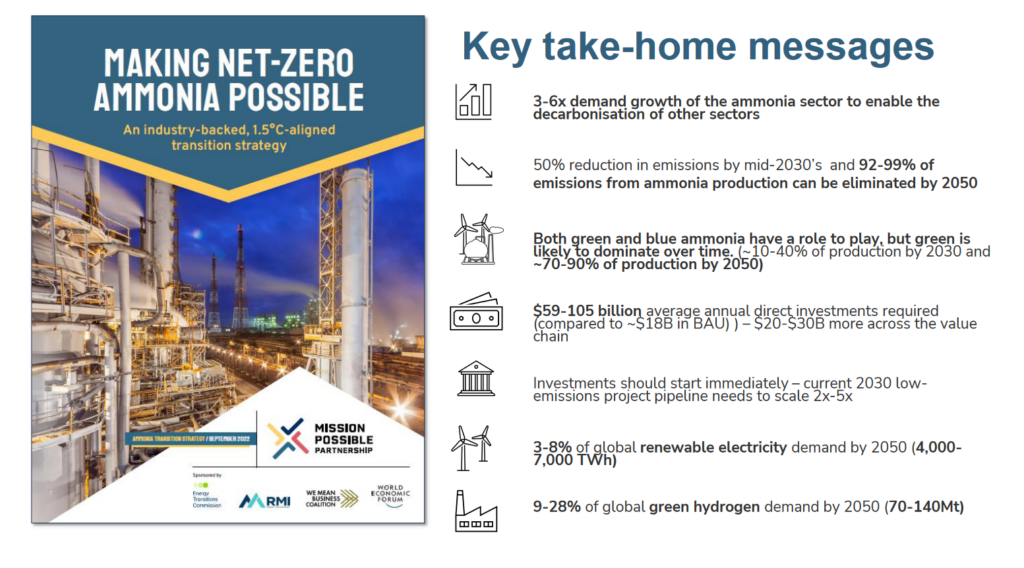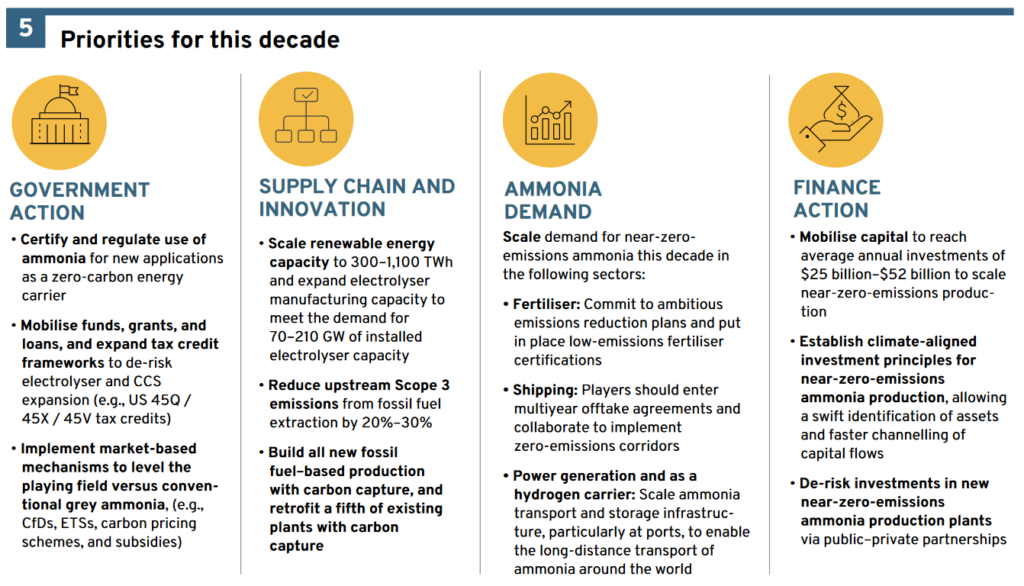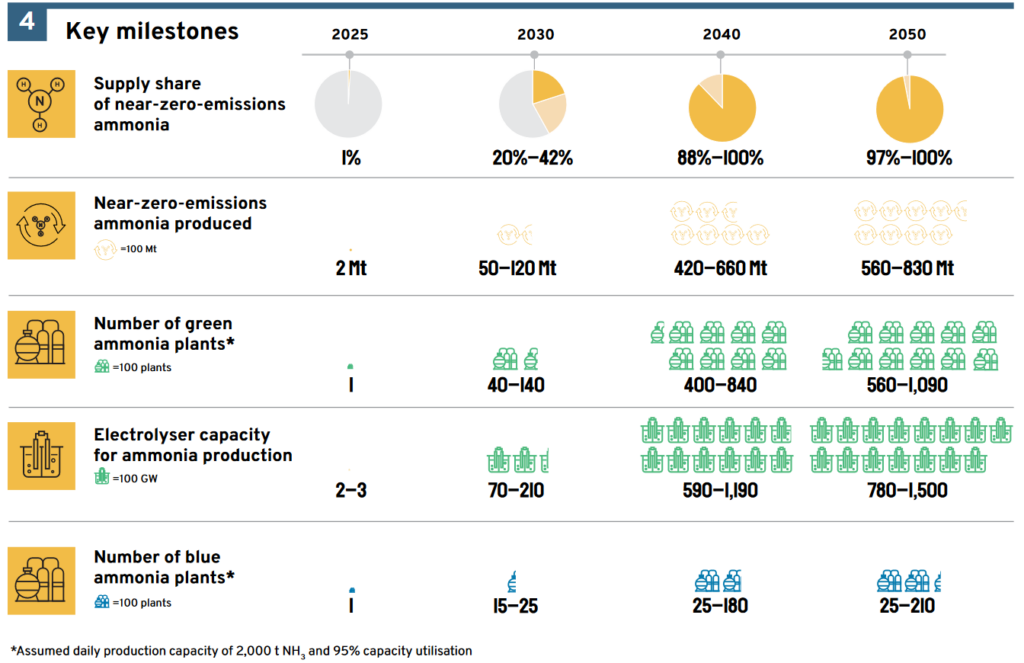Making net-zero ammonia possible: new transition strategy for the industry
By Julian Atchison on September 29, 2022
Mission Possible Partnership (MPP) launches new report

MPP’s new report (click to download full pdf) has been endorsed by thirty-five leading ammonia energy players from across the value chain, comprising almost 25% of global production capacity outside China and Russia. The report sets out a series of levers, mechanisms and priorities for the coming decade to ensure the ammonia sector achieves a 50% emissions reduction target by the mid 2030s, before almost fully decarbonising by 2050.
Key takeaways

- Ammonia demand will grow three-to-six fold from current volumes by 2050, largely due to maritime fuel requirements.
- The maritime sector alone could “make or break” the scale-up of ammonia production.
- “Green” ammonia will likely dominate over time, making up 70-90% of global ammonia production by 2050.
- The ammonia sector will be responsible for 3-8% of global renewable electricity demand by 2050, and 9-28% of global green hydrogen demand.
- Investments need to start immediately, and will need to be in the order of $59 – $105 billion each year to 2050. This is compared to business-as-usual investments of around $18 billion for the sector currently.
- Fertiliser use is likely to increase 30% by 2050, but improvements in farming practices and reducing food waste could moderate this increase.
Priorities for the remainder of this decade

- government action (certification & market-based mechanisms).
- urgent scaling of renewable energy generation (enough to meet the demand for 70-210 GW of installed electrolysers).
- commitments from maritime players (multi-year offtakes and green corridor collaborations).
- and capital mobilsation for investment in near-zero emissions ammonia production ($25 billion–$52 billion annually).
Deployment milestones

This Ammonia Transition Strategy is operationally relevant and industry-backed, not wishful thinking or pie in the sky. We know how to reduce emissions, initially deploying resources and technology available today. The imperative is to act now, in this decade: we’re working with industry, supply chains and finance to deliver the clear thinking and asset-by-asset plans to make net zero viable.
Mission Possible Partnership CEO Matt Rogers in his organisation’s official press release, 21 Sept 2022